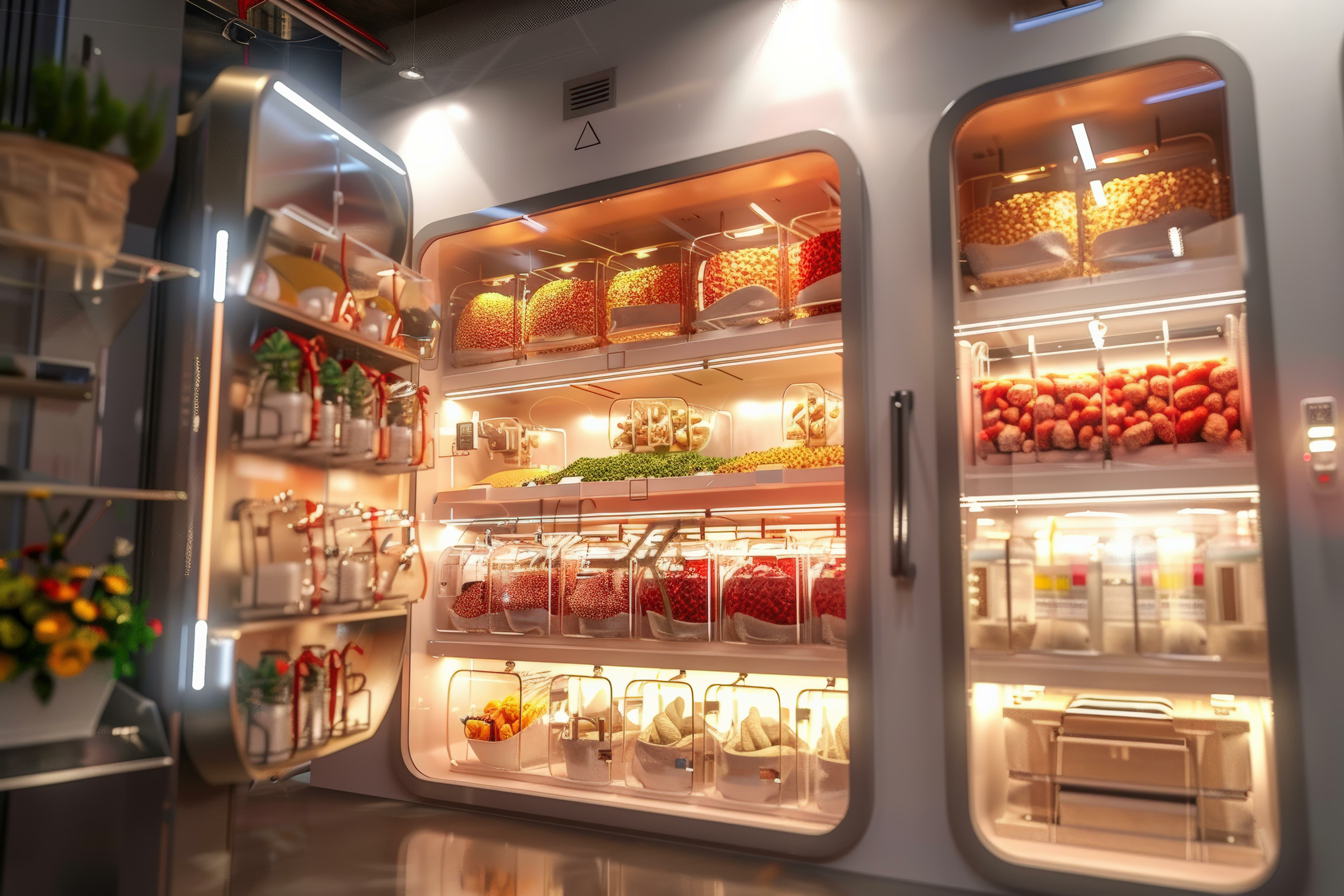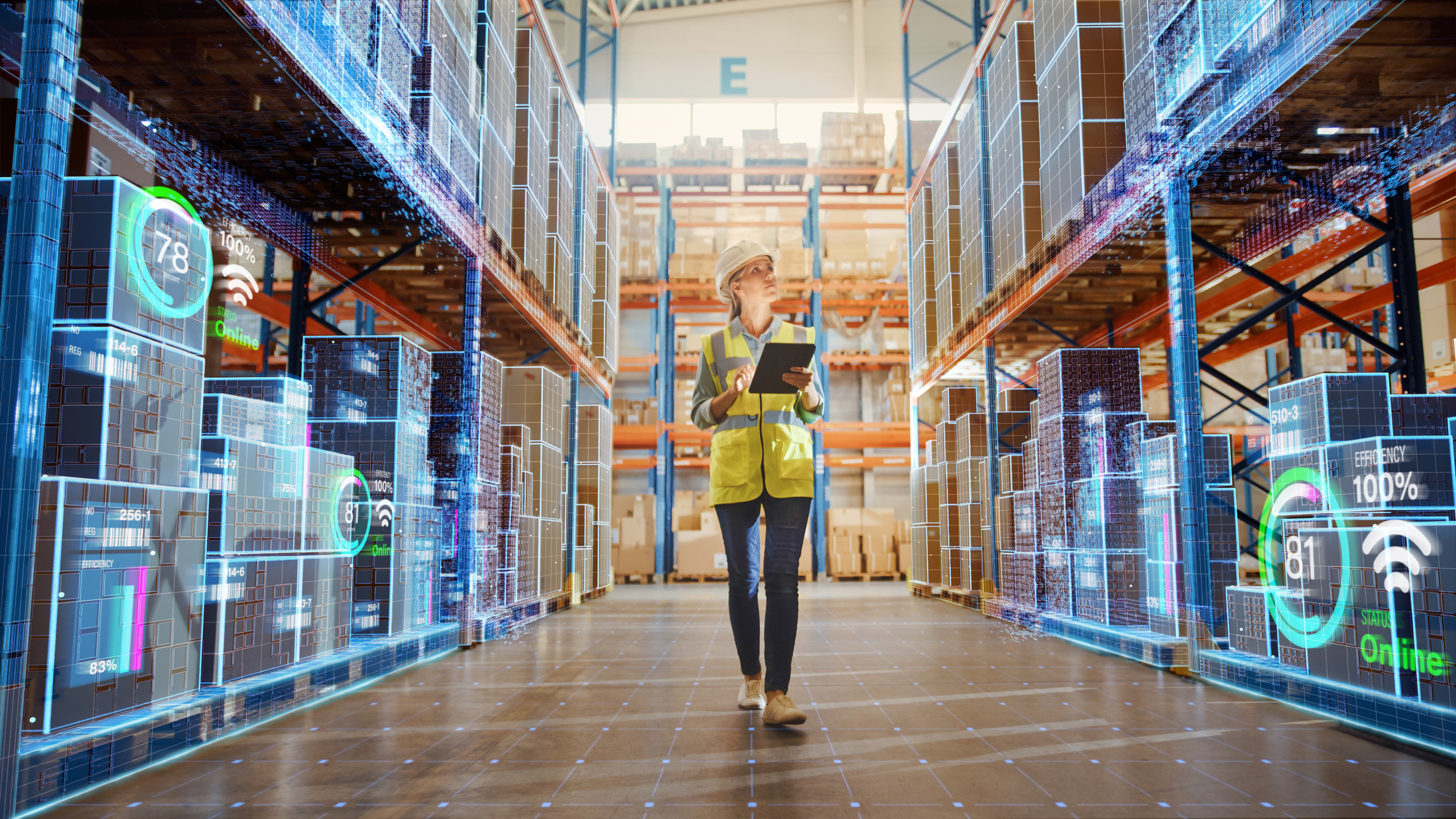Consumer Packaged Goods: Supply Crunch
To better understand what will be required of leaders in the sector over the next five years, IQ presents the top five disruptive forces and critical success factors in CPG & FMCG, featuring insights from industry executive Frank Iannella, SVP & CIO, Digital and Technology at HEINEKEN USA.
Executives in the consumer packaged goods industry face a complex landscape marked by increased competition, evolving consumer behaviors, and the need for sustainability. Although inflation is expected to stabilize, ongoing shifts in consumer expectations and market dynamics demand innovative strategies to preserve profitability and enhance resilience.
As interest rates begin to decrease, a potential rise in consumer confidence could fuel spending, providing new growth opportunities for brands that are prepared to meet the demand.
Based on research and insights from global executives across the consumer packaged goods industry, the top five disruptive forces are:
1. Economic Uncertainty Abounds
Although presently decreasing, persistent inflation drives up costs for raw materials, transportation, and overall operations, leading to higher prices for consumers. This reduces consumer spending power, particularly for non-essential goods, and can negatively impact sales and profitability.
To address these challenges, CPG companies are implementing cost management and efficiency improvements, with many companies streamlining operations, optimizing supply chains, and adopting lean manufacturing principles to reduce waste. Some companies are also cutting non-essential expenses by renegotiating supplier contracts and reducing marketing budgets to achieve economies of scale.
Pricing strategies have become critical in managing inflation. Dynamic pricing, using data analytics to adjust prices in real-time, helps maintain profit margins while staying competitive. Additionally, companies are adopting value-based pricing, emphasizing the quality and benefits of their products to justify higher costs to consumers.

Diversification and innovation play a crucial role in mitigating the effects of inflation, as well. Companies are expanding their product lines to include both premium and budget-friendly options, catering to different consumer segments. Investing in R&D for new products, sustainable materials, and packaging innovations helps drive growth and create new revenue streams.
2. Supply Chain Vulnerabilities
Ongoing geopolitical tensions, natural disasters, and logistical issues will continue to cause delays, increased shipping costs, and shortages of essential materials, all of which can severely disrupt production schedules and lead to stockouts.
To combat these challenges, CPG and FMCG companies are actively diversifying their supply chain sources and building relationships with multiple suppliers across different regions to reduce dependency on any single supplier. Nearshoring and onshoring will remain popular as they reduce transportation times and costs while minimizing exposure to global disruptions.
Enhanced inventory management is another important approach. Companies are maintaining higher levels of safety stock and strategically stockpiling essential materials to buffer against disruptions. Investment in technology is also essential, with real-time monitoring and predictive analytics helping companies identify and respond to issues more quickly. As hinted at above, strengthening supplier relationships is also vital for long-term resilience. Collaborative partnerships with key suppliers and regular supplier audits help ensure that suppliers are prepared for disruptions. Flexible logistics, including multi-modal transport and partnerships with third-party logistics providers, enable companies to adapt quickly when one transportation mode is impacted.
Lastly, financial strategies like hedging and maintaining flexible financing options help companies manage liquidity and protect against losses during disruptions. Companies are focusing on contingency planning by conducting scenario planning and developing business continuity plans.
3. Sustainability and Regulatory Challenges
Growing environmental awareness and stricter regulations are pushing CPG and FMCG companies to adopt more sustainable practices, including reducing carbon emissions, minimizing waste, and ensuring ethical sourcing. However, complying with these regulations often requires significant investment in new technologies and processes, which can strain resources and affect profitability.
To manage these challenges, companies are implementing sustainable practices that reduce overall environmental impact. This includes cutting carbon footprints through renewable energy and energy efficiency, ensuring sustainable sourcing of raw materials, and implementing waste reduction initiatives like zero-waste and recyclable packaging.
Compliance with environmental regulations is another critical focus, with companies setting up systems to monitor their environmental impact and meet regulatory requirements. Regular reporting on sustainability metrics and obtaining certifications like ISO 14001 help demonstrate compliance to stakeholders. Tough, sheer regulatory compliance ensures a license to operate and does not provide any competitive advantage on the sustainability scale. More and more players seeking differentiation are setting themselves up with ambitious targets on more proactive scales, such as the Science Based Targets Initiative (SBTI) or the 17 Sustainable Development Goals of the United Nations Development Program (UNDP).
Innovation and technology are playing a key role in developing eco-friendly products, such as those made from biodegradable materials or designed for a circular economy. Companies are exploring product take-back schemes and designing goods for easier recycling and disassembly.
Stakeholder engagement and collaboration are also essential, with companies working closely with suppliers, consumers, and regulatory bodies to align on sustainability goals. Corporate governance is being enhanced, with dedicated sustainability teams overseeing the integration of sustainable practices into company strategy.
4. Tech Disruption and Digital Transformation
Rapid developments in areas like AI and machine learning require companies to continually adapt and invest in new technologies. While these advancements can enhance operational efficiency and customer experience, they also demand significant resources, infrastructure, and specialized skills.
To address these challenges, companies are investing heavily in digital infrastructure, such as cloud computing for improved scalability and IoT technologies to streamline operations and enhance supply chain visibility. However, the increasing reliance on digital platforms makes cybersecurity a top priority. Organizations are deploying advanced security protocols, conducting regular employee training, and creating incident response plans to mitigate cyber threats.
Data analytics will continue to be essential for companies to gain deeper insights into consumer behavior and optimize inventory management. Predictive analytics, powered by AI, helps companies forecast demand and enhance decision-making processes. Additionally, AI enables personalized customer experiences through tailored product recommendations and targeted marketing.
5. Ever-Evolving Consumer Behaviors
Shifts in preferences, driven by demographic changes, digital engagement, and evolving lifestyle trends, demand that companies remain agile and innovative. To address these shifts, companies are further diversifying product offerings to include healthier, organic, and eco-friendly options, as well as offering customizable products to meet individual preferences. By engaging customers through social media and loyalty programs, companies are building stronger relationships and staying attuned to trends.
Data-driven decision-making is another key strategy. Advanced analytics and market research are essential for gaining insights into consumer behavior and predicting future trends. This helps companies tailor their offerings and marketing strategies to meet changing demands.
Flexibility in production and supply chains is also essential for responding quickly to changes in demand. By adopting agile manufacturing processes and sourcing materials locally, companies can reduce lead times and improve supply chain resilience.
Additionally, companies across the CPG sector are focusing on health and wellness by expanding product lines with low-sugar, low-fat, and nutrient-rich options for those in food service. Clear labeling and transparency help consumers make informed choices.
Critical Success Factors
In a 1984 Sloan Management Review article titled, “An Assessment of Critical Success Factors,” A.C. Boynlon and R.W. Zmud wrote:
“Critical success factors [CSFs] are those few things that must go well to ensure success for a manager or an organization, and therefore, they represent those managerial or enterprise areas that must be given special and continual attention to bring about high performance. CSFs include issues vital to an organization’s current operating activities and to its future success.”
For CPG executives and enterprises to survive—and thrive—over the next five years, capitalizing on the following critical success factors will be key:
Embrace Advanced AI
As digital transformation reaches new heights, companies need to go beyond basic e-commerce capabilities to truly revolutionize customer engagement, streamline supply chains, and enhance operational efficiency.
AI is reshaping how consumers browse, research, and buy products. Through predictive analytics and AI-powered recommendation engines, companies can offer highly personalized shopping experiences that anticipate consumer needs and suggest relevant products. This creates a tailored experience that captures attention and increases conversions, moving beyond traditional browsing to a more intuitive, data-driven model of engagement.
Customer service is also undergoing a transformation with AI. Tools like chatbots and virtual assistants are handling routine inquiries, providing instant, 24/7 support, and freeing up human agents to focus on complex issues. Advanced AI can even predict potential service needs based on purchasing patterns, making customer interactions proactive rather than reactive, which boosts satisfaction and strengthens brand loyalty.
AI’s impact extends deep into the supply chain. Predictive analytics enable companies to forecast demand with greater accuracy, optimize inventory levels, and prevent stockouts or overstock situations.

Furthermore, AI-driven automation in logistics and procurement can streamline operations, reduce costs, and enhance responsiveness, allowing companies to adapt swiftly to changing market conditions.
Prioritize Sustainability
With growing consumer demand for eco-friendly products, companies are focusing on developing sustainable goods with attributes like biodegradable packaging and responsibly sourced ingredients.
In addition to product innovation, many companies are adopting circular economy practices, such as product take-back programs and recycling initiatives. These efforts help reduce waste and promote a more sustainable production cycle, appealing to consumers who prioritize environmental responsibility.
Climate action is another key focus, with companies investing in renewable energy and reducing their carbon and water footprints. Meeting regulatory requirements while appealing to environmentally conscious customers is critical in maintaining competitiveness. To succeed, companies are prioritizing sustainable product design and exploring new materials that have less environmental impact, implementing new approaches such as low-carbon-by-design R&D. Equally important is effectively communicating sustainability efforts to build brand loyalty and distinguish themselves from competitors.
Necessary for the long-term continuity of their business, these investments do not necessarily lead to short-term returns when they are confronted to a large portion of their consumers who “care for the environment but do not act.” in their purchase behaviors.
Don’t Ignore Emerging Markets
With expanding middle-class populations and rising consumer spending in these regions, companies are focusing on entering new markets to capture this growth.
Businesses are adapting their products and marketing strategies to align with local preferences, tastes, and cultural norms. This customization ensures that brands resonate with local consumers and meet their specific needs.
Forming strategic partnerships and joint ventures with local businesses is another critical factor. These collaborations help CPG companies navigate the regulatory and logistical challenges unique to emerging markets. A strategic focus on market research is essential for identifying high-growth regions and understanding local consumer trends.
Additionally, building local supply chains and distribution networks supports long-term market entry and growth. By seizing these opportunities, CPG companies can tap into untapped markets, drive revenue growth, and secure a competitive edge in rapidly developing regions.
Innovating Innovation
Many CPG and FMCG companies are focusing on innovating and integrating smart technologies into their products, such as IoT-enabled devices and connected appliances, to meet the growing demand for convenience and enhanced functionality.
As consumer expectations for convenience and personalized experiences rise, companies are increasingly integrating smart technologies like IoT-enabled devices and connected appliances into their product offerings. For instance, the global IoT in retail market is projected to reach $94 billion by 2025, according to Statista research, growing at a compound annual growth rate of 21.5%. This growth reflects the demand for devices that enhance consumer convenience and enable data-driven insights into usage patterns. In addition, companies are investing in technology R&D and incubation zones, where cross-functional teams work on a portfolio of experiments that address the three-to-five year horizon. An environment of open innovation and the ability to partner with startups and other potential partners is a key component to this. For example, Unilever has partnered with multiple tech startups through its Foundry program, accelerating digital innovation across its product lines.
Open innovation and partnerships with startups also play a critical role in driving this progress. By collaborating with external innovators, CPG companies can access a broader range of expertise and solutions, from eco-friendly packaging to AI-driven consumer insights
According to recent industry research, nearly 80% of consumer goods companies report that partnerships and collaborations are a primary way they are driving innovation.
Leverage Data-Driven Insights for Enhanced Personalization
By leveraging big data and analytics, companies can gain valuable insights into consumer behavior, preferences, and trends, allowing them to make more informed decisions in real-time.
Personalization is becoming increasingly important, with companies implementing personalized marketing strategies tailored to individual consumers. This approach helps drive engagement, improve customer experiences, and boost conversion rates by offering products and services that meet specific needs.
Companies must invest in data analytics tools and technologies to better capture, analyze, and interpret consumer data. This enables the development of more targeted marketing campaigns and product offerings that align with consumer desires and behavior.
Take Five
In the fast-evolving CPG industry, the future belongs to companies that can adapt to economic pressures, supply chain disruptions, and rapidly changing consumer demands. Success will depend on embracing digital transformation, streamlining operations, and fostering sustainable practices. By leveraging cutting-edge technologies like AI and data analytics, CPG companies can personalize consumer experiences and optimize production efficiency. Additionally, diversifying supply chains and strengthening relationships with suppliers will enhance resilience against global disruptions.
However, it’s not just about technology—responding to consumer preferences for eco-friendly products and healthier lifestyles will also be critical. Companies that can seamlessly integrate sustainability with innovation will stand out in a crowded market. The race is on for companies to stay agile, manage costs, and anticipate market shifts to thrive over the next five years.
Those that capitalize on emerging markets, build omnichannel customer experiences, and prioritize sustainability will emerge as industry leaders, while those that fail to innovate risk being left behind. The future of CPG is being shaped right now, and the most adaptable companies will seize the opportunity. IQ
Executive Perspective: Global Beverages

Frank Iannella is SVP, Digital and Technology and Chief Information Officer at HEINEKEN USA—the American subsidiary of Heineken N.V. In his role, Mr. Iannella is responsible for driving the digital and technology agenda while demonstrating the importance that digital innovation has for Heineken’s brands, distributors, and employees. Before joining HEINEKEN USA, Mr. Iannella led the IT vision and strategy at FreshPet to support aggressive growth targets along with increased supply chain capacity. Prior to that, he spent 22 years at PepsiCo, where he led IT teams across various business functions including sales & marketing, go-to-market, innovation, supply chain, and enterprise data at both local and global levels. His extensive experience at PepsiCo allowed him to develop a deep understanding of how technology can drive business success and operational efficiency, making significant contributions to the company’s digital transformation initiatives.
IQ: What are the top challenges you’re focusing on over the next five years?
Mr. Iannella: First, the pace of digital change is a huge challenge. Every process is moving into the digital realm, and if companies don’t adapt, they’ll fall behind competitors who are leveraging new technologies. This also includes the data space—being able to compete with digital-native companies is crucial. Data regulation is also becoming more stringent, which poses a challenge.
Consumer data collection may become more difficult, especially with growing regulations in Europe and parts of the U.S. As we move toward a cookie-less world, finding new ways to connect with consumers and personalize messaging will be more challenging.
And I would be remiss not to mention how critical supply chain resilience is. Over the last few years, we’ve faced significant disruptions, such as port issues and geopolitical risks. Companies need to build stronger, more resilient supply chains to handle future challenges.
IQ: You mentioned pressure-testing your supply chain, but what other strategies is Heineken USA focused on to anticipate and mitigate future risks?
Mr. Iannella: As an importer one key area for us is indeed our supply chain. The distance we cover—and the need to get products to demand points and on the shelf across the country—can present challenges. We’re building a more resilient supply chain, allowing us to forecast our response to issues like supply chain disruptions, port strikes or container delays in advance, rather than just reacting when they happen. We’re also building better data capabilities to improve our forecasting and to gain more visibility across our supply chain.
Another focus is becoming a more data-driven organization. We’re working to leverage data in every aspect of the business—from identifying opportunities to engaging with our customers and consumers. While data can be hard to gather, and it’s not always clear what the insights are, our goal is to translate that data into actionable insights. This is a big part of how we’re shaping our future strategies.
IQ: Based on your experience, is there a unique challenge working for a company with such a long history like Heineken, especially when it comes to shifting the focus toward data and making the case for investing in these capabilities?
Mr. Iannella: Heineken N.V. is proud of its history and what it has built over more than 150 years. As a family-owned business, the company thinks in generations with the goal of delivering long-term, sustainable value. So it is safe to say we are in this for the long haul.
To address modern market challenges, it is essential to be forward-thinking and that of course includes focusing on digital capabilities. The value that the brand places on this is reflected in the positioning of our global CIO—who directly reports to the CEO—who is a member of the executive leadership team and is a leading advocate for data, technology, and digital innovation.
IQ: When you think about opportunities fueled by data and technology, where do you see the greatest potential for growth? Is there something that could truly disrupt the industry beyond AI?
Mr. Iannella: I think a key opportunity lies in personalization and engagement. In a world where capturing consumer attention and their spending is increasingly difficult, the more you can tailor your messaging to individuals, the more competitive you will be. Digital natives are consuming information and making purchases online, so if you can reach them with personalized, meaningful content, you’ll win their loyalty. Additionally, immersive technologies like augmented reality (AR) and virtual reality (VR) are starting to change how consumers experience brands, blending both the digital and physical worlds in new and innovative ways.
I also see supply chain optimization through data as another massive area of opportunity. Data can enable real-time insights, not only to streamline operations and reduce costs but also to make our supply chain more resilient, sustainable, and responsive to global disruptions—like we’ve seen over the past few years. The use of IoT devices to track shipments or AI to forecast demand more accurately is revolutionizing how we operate.
IQ: What will executives need to lead their companies through challenges and ensure success over the next five years?
Mr. Iannella: Leaders need to be resilient to change and able to guide their organizations through it. You can have the best strategy or product, but if you don’t bring the organization along with you, it won’t work. Change is constant, and every year presents new challenges that leaders must help their teams absorb and adapt to.
An innovation mindset is also essential. Especially in IT, leaders must think a few steps ahead and be ready to test new ideas, whether it’s AI, data, or marketing automation. This future-focused thinking is key to staying competitive and helping business partners navigate what’s next.
Digital and data literacy is another critical area. It’s not enough to talk about using AI; you need the right data infrastructure and skilled people to manage it. Without a solid foundation, advanced analytics like predictive insights won’t work. Raising the baseline of digital and data proficiency within the organization is essential for future success.
Lastly, leaders need empathy. Change is happening fast, and it’s important to acknowledge the challenges it creates. People will fail, but what matters is learning from those failures and moving forward. Leaders who foster this mindset create a healthier environment for navigating rapid change.
IQ: One question we always like to ask—what keeps you up at night and what keeps you passionate about your work?
Mr. Iannella: What keeps me up at night is the need to stay relevant. With the rapid developments in AI and how it’s affecting every business process, function, and competition, I feel the weight of making sure we, as a company, stay on track. It’s not just about my role personally, but about ensuring that Heineken USA remains competitive and that my voice has the necessary influence to make an impact. Staying relevant in this ever-changing environment requires constant learning, understanding, and synthesizing new information. I don’t want to become a leader who gets stuck in old ways and is no longer adding value.
On the other hand, what excites me is the incredible time we’re living in. The level of innovation and progress is extraordinary, and digital capabilities are now driving real impact across industries. It’s no longer just about managing costs through ERPs; it’s about creating digital products and solutions that truly matter.
That’s what drives me—the opportunity to make a real difference and knowing there’s so much potential for growth and innovation in what we do.
IQ: Is there anything else you would recommend to peers in the fast-moving consumer goods and beverage industry, or to executives in general, about what it will take to keep businesses successful and thriving over the next five years?
Mr. Iannella: First, organizations need to know how to operate their business and how to transform it simultaneously. This is tough because you have people who are great at day-to-day operations and others focused on transformation, which often requires a different mindset and approach. These two areas can sometimes conflict, so it’s important to consciously think about how to balance both. Successful transformation requires organizing around change while keeping the business running smoothly.
Second, specifically for IT leaders, we now have a seat at the table, and it’s crucial to bring strong business acumen to that role. It’s not enough to just focus on technology—you need to think more broadly about business challenges, processes, people, and the competitive landscape. Once you’re at the table, you must act as a business leader, not just a tech expert.
Lastly, the pace of change is relentless, and having the right leaders and change agents is essential to navigating that. Surround yourself with a diverse group of people who can help you manage change—some who embrace it and some who are more cautious. A balanced approach will help you lead through constant shifts while ensuring stability and innovation. IQ



